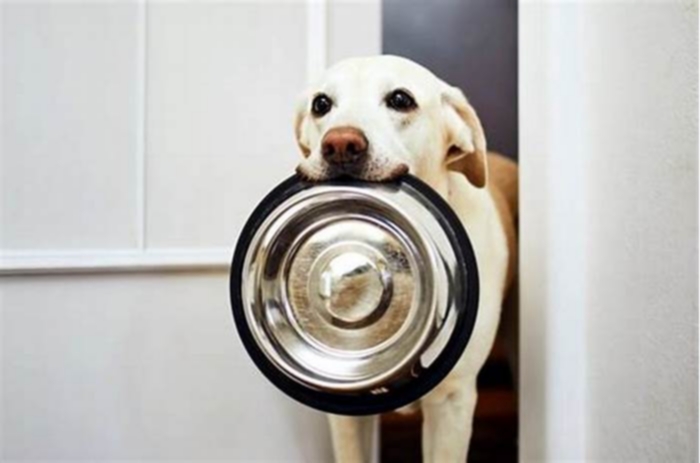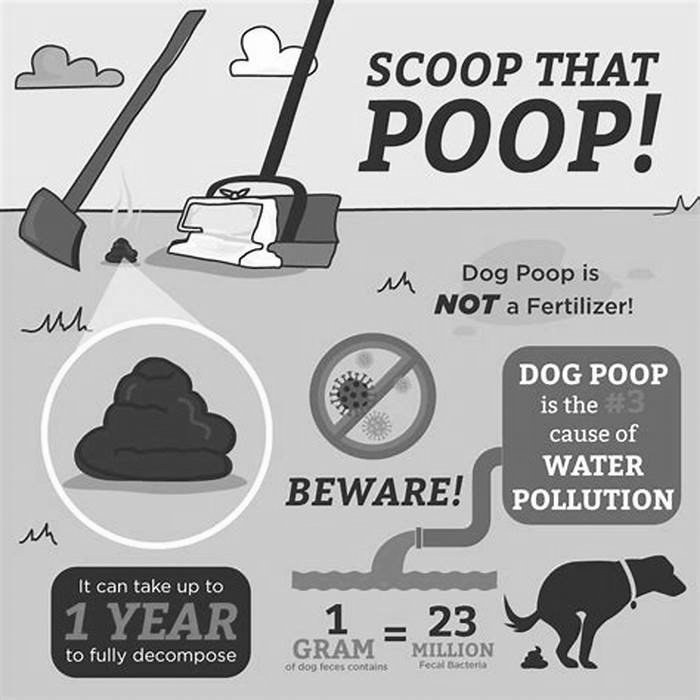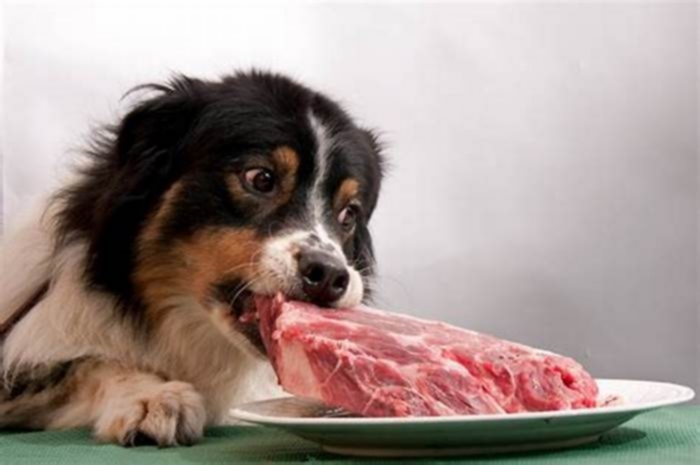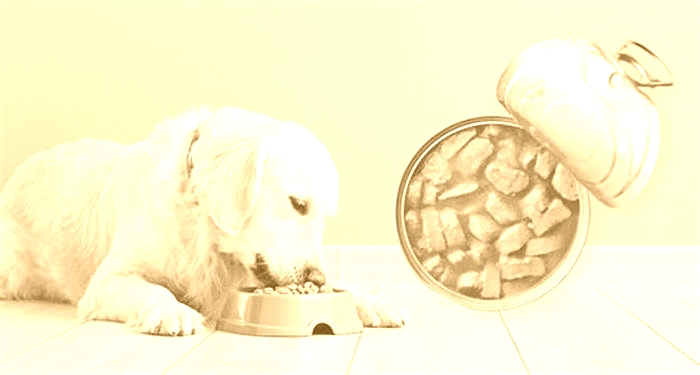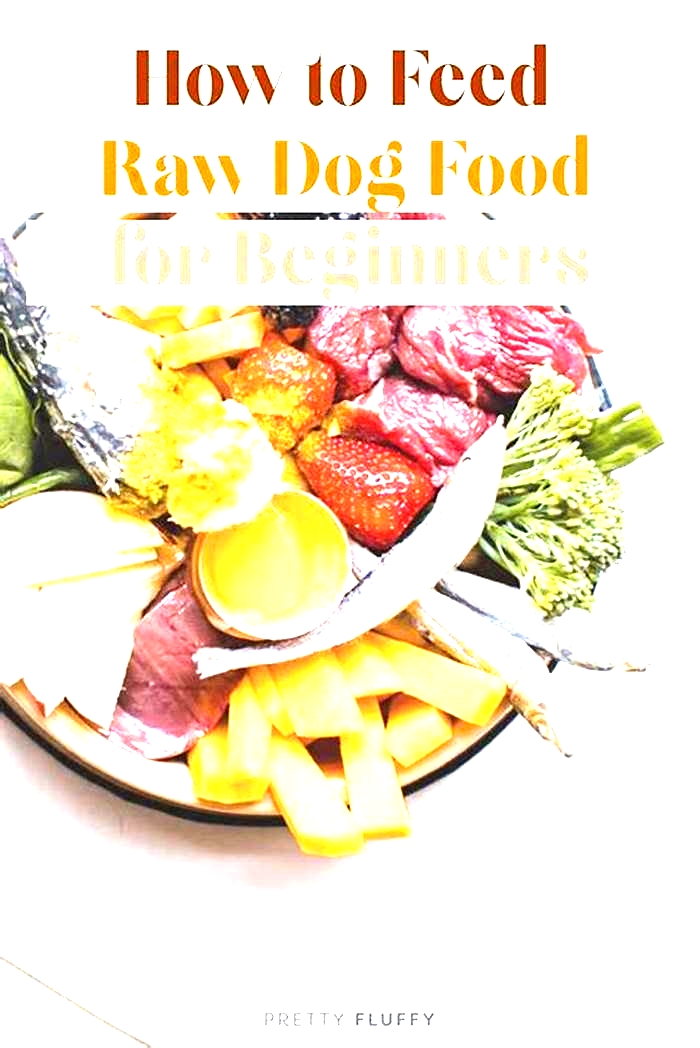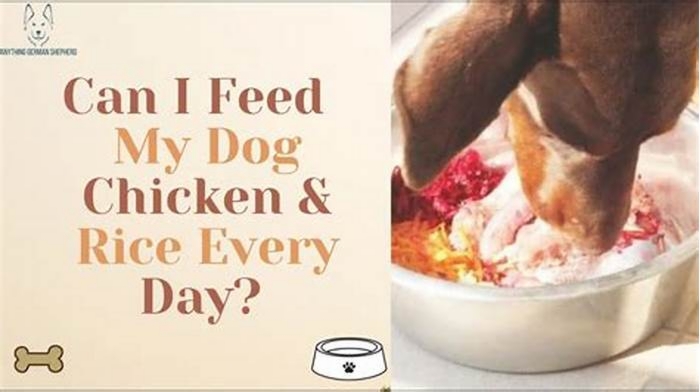Should dog bowls be washed everyday
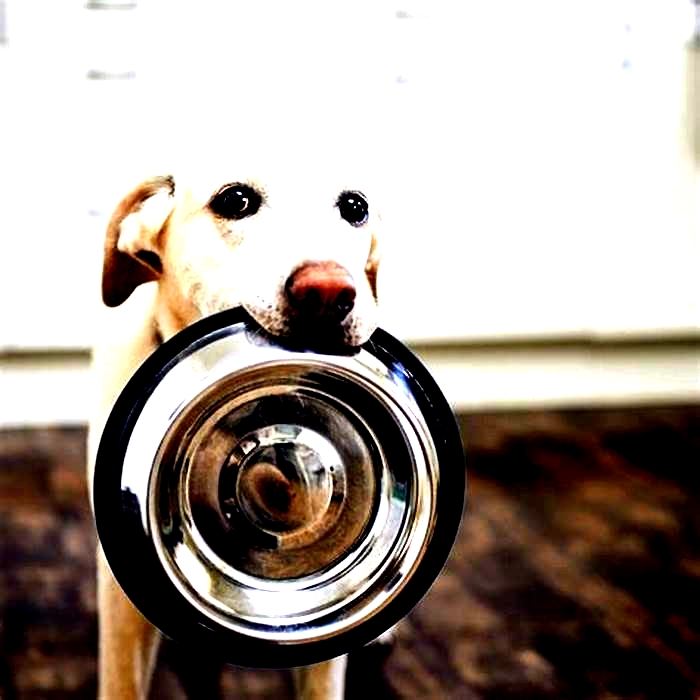
How To Clean And Sterilize Your Dogs Bowl (The Right Way!)
To keep the lights on, we receive affiliate commissions via some of our links. Our review process.

How often do you wash your dogs bowl?
Like most people, probably not enough.
Dont feel guilty Its never too late to start!
Today, Im going to teach you everything you need to know about cleaning your dogs bowl!
Why do you need to clean your dogs bowl?

Over the years, I have talked to many dog owners who didnt clean their dogs bowl. Ever.
Yes, you are reading that correctly
It never actually occurred to these dog owners to wash their dogs bowl.
No, these were not negligent pet owners. They were typical dog owners, like you or me, who simply didnt know any better.
Is your dog bowl washing schedule similar? No need to feel guilty.
However, there is a very good reason why you should consider routinely washing your dogs bowl
The health of your precious pooch is at stake.
According to William Burkholder, DVM, from the Center for Veterinary Medicine at the Food and Drug Administration (FDA), the microbes from your dogs saliva can be transferred to your dogs bowl, creating an area where bacteria can flourish.[1]
What kind of bacteria grow in the bowls depends on factors like the environment, exposure and oral hygiene of the animal, but possible examples include Staphylococcus aureus, Pasteurella multocida and different species of Corynebacterium, Streptococcus, Enterobacteria, Neisseria, Moraxella, Bacillus and, less frequently, Salmonella and Pseudomonas.
In fact, a study done by NSF International found that pet food dishes are the 4th germiest product found in the average home.[2]
Now, your dogs digestive system is well equipped to handle nasty bacteria like this
And, it needs to be.
I mean, just this week, my dog has
- Eaten my cats poop,
- Eaten another dogs vomit, and
- Gnawed on a bone that he managed to hide in the garden weeks ago.
And, as I type this, hes giving his butt a good lick.
Pretty gross, right? On its own, any one of those things would make you or me sick.
But for a dog, this is all normal. Which brings me to the argument I often see repeated
My dog already eats gross things, and hes fine. Whats a bit of crusty leftovers from dinner in his bowl?
It sounds logical, right? Whats yesterdays uneaten meal compared to last months dog bone?
While it might sound like a good argument, the problem is these bacteria can all cause disease. This is a particular problem in young puppies, elderly dogs and dogs with weak immune systems.
I dont have to tell you that cleaning your dogs bowl is much cheaper than a trip to the vet.
But its not just your dog that these nasty germs can harm
Young children can touch your dogs bowl while playing on the floor, and then they may put their fingers in their mouths this is why you should baby proof your dog bowl
On the other end of the age group, family members with weak immune systems are also at risk from the bacteria found in dirty dog bowls.
And, as if you needed another reason to wash your dogs bowl
Unclean bowls can stink. You might not notice it, but I bet your guests can. They are just being polite by not bringing it up.

Finally, if you feed your dog outside, any leftover food, no matter how small, is going to attract unwanted guests ants!
These problems can be avoided with regular washing. So, why risk it?
How often should you wash your dogs bowl?
Many vets agree that you should wash your dogs bowl daily
- Dog bowl with dry food If you feed with kibble, your dogs bowl should be washed daily, after the final meal of the day.
- Dog bowl with wet food If you feed with canned food or raw meat, your dogs bowl should be washed and sanitized after every meal.
- Dog bowl with water Your dogs water bowl should be washed once per day.
- Dog mat If you use a mat to protect your floor or carpet from spills, then that too should be cleaned daily.
Thats some regular cleaning, right? If you have one of each, youll have to wash four different things each night.
I recommend buying a few different bowls so that you have a spare on hand while the others are in the wash. That way, your hungry dog wont have to wait for you to clean his bowl before dinner is served.
How to clean your dogs bowl
If you want to clean your dogs bowl, you have two options:
1. Hand wash

Roll up your sleeves and get to work. While this might be the most labor-intensive method of washing your dogs bowl, its also the fastest. If your dog bowl is not dishwasher-safe, then this is the only way to clean your dog bowl:
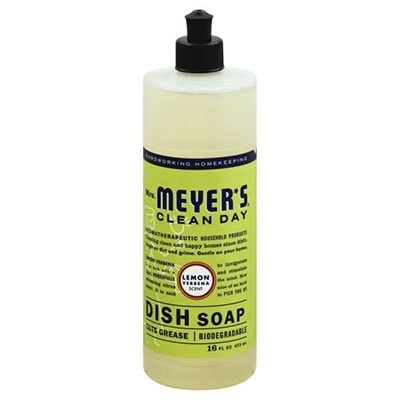
- Step one: Grab your dish soap
It all starts with a good dish soap. Because I want the best for my dog, I wash my dogs bowl with the same natural dish soap I use on my own dishesIf you have never used this product, I recommend trying it. Affordable, free from nasty chemicals and, most importantly, cuts through grease and grime like its on a mission. And, its perfect for cleaning dog bowls.
- Step two: Grab a dedicated dog bowl sponge
While there is a lot I share with my dog, my kitchen sponge is where I draw the line. The kitchen sponge is already the germiest place in your house. And thats without using your dish sponge on your dogs bowl.[3]So, grab a second sponge or cloth that you only use on your dogs bowl. Hint: Choose one in a different color from your usual sponge so that you can tell them apart. Also, if your dogs bowl is plastic, make sure you choose a sponge made from a non-scratch material any scuffs and scratches are breeding grounds for bacteria.
- Step three: Get washing!
Apply your dish soap to your sponge, and scrub your dogs bowl under hot water, wiping away any grease or leftover dog food.Rinse with cool, clean water and dry.Yeah, thats really all there is to it.
2. Dishwasher

If you are short on time, or just feeling lazy, then a trip through a dishwasher cycle is the easiest way to clean a dog bowl.
Just be mindful that not all dog bowls are dishwasher-safe. Make sure you check the washing instructions for your bowl.
- Plastic dog bowls Generally top-rack dishwasher-safe
- Stainless steel dog bowls Dishwasher-safe
- Ceramic dog bowls Generally not dishwasher-safe
Note: If your dogs stainless steel or plastic bowl has a non-skid rubber base, then it is not suitable for cleaning in the dishwasher.
How to remove dry, caked-on dog food

Maybe its been a while since you last washed your dogs bowl. Or perhaps the hot sun caused uneaten food to harden like cement
Whatever the reason, if you find yourself struggling to remove stubborn food from your dogs bowl, then there is one thing you need to do:
Soak it!
Yep, a long soak in hot, soapy water is all it takes to soften and lift caked-on dog food.
Once done, hand wash your bowl, gently scrubbing to remove any remaining dog food that clings to the bowl.
How to sterilize your dogs bowl

Just because your dogs bowl looks clean doesnt mean that it is germ-free.
A 2006 study showed that even after a rigorous hand wash with soap or a trip through the dishwasher, 67% or more bacteria (salmonella) remained.[4]
Dr. Jessica Vogelsang, renowned veterinarian and author, believes that in addition to daily cleaning, we should disinfect our dogs bowl once a week.[5]
Fortunately, sanitizing your dogs bowl is a quick and simple process
After washing your dogs bowl to remove any caked on food and other grime, follow these steps:
- Add cup regular bleach to a gallon of water.
- Let the dog bowl sit for 10 minutes.
- Remove and rinse thoroughly with fresh water.
- Leave it to air dry.
This simple treatment will kill parvo, a leading killer of puppies under six months old (older dogs are not immune either).
Note: chlorine based disinfectants are unsuitable for stainless steel dog bowls and may cause them to rust.
How to skip cleaning your dogs bowl when on vacation
As you see, keeping your dogs bowl clean and sterilized is a fairly simple task.
But if you take your dog on vacation, its an extra chore that you probably dont want.
Thats where a disposable dog bowl comes in

Simply pour your dogs meal inside and once he is finished, toss the bowl. No more cleaning dog bowls while on vacation!
Best of all, these bowls are compostable, meaning that unlike plastic bowls, they will break down when thrown away.
Conclusion
I know cleaning is a pain, but doing your doggy dishes is an essential part of keeping your dog and family healthy!
How often do you clean your dogs bowl? Let me know in the comments below!
Tagged With:Why You Should Clean Your Pets Food and Water Bowls Right Now
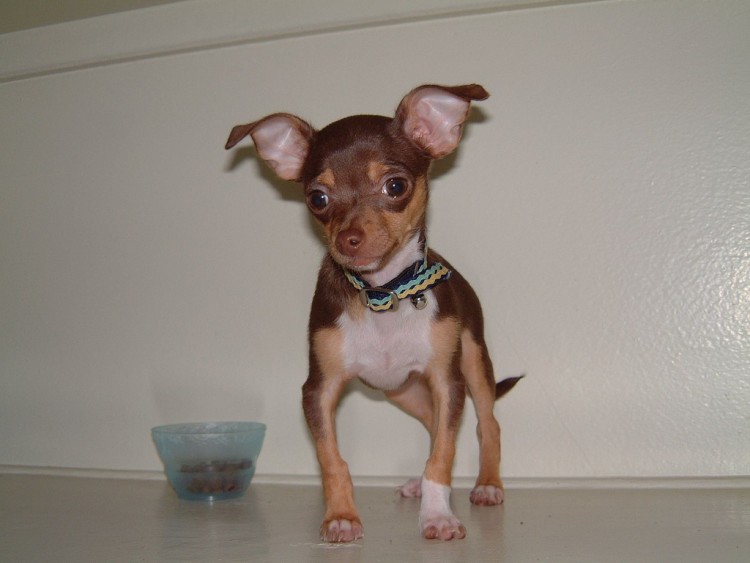
Are you the queen of clean, or is your kitchen quietly chaotic?
In the context of hygiene, pet food bowls are definitely a good to be queen-of-clean situation.
Unfortunately, bowls are a hot spot of risk our pets can infect people with bugs and parasites. Best to keep them clean, no?
Where Do the Bugs Come From?
A diseasethat normally infects an animal but poses a risk to people is known as a zoonosis.
The most common zoonoses with regard to food and water bowls are salmonella, campylobacter and worms.
These bugs have different mechanisms of causing infection, but they can all be shed into the environment through feces and travel indoors on the pets paws or coat.
When your pet licks hisfur and then eats from a bowl, this can spread infection onto an object you touch. When you pick up the bowl, you get that same bug on your hands.
Also, with salmonella, the food itself may contain bacteria, with raw meat and eggs posing a special risk. We normally rely on thorough cooking to kill salmonella (remember when you ate an undercooked burger and were ill for days afterward?), so feeding a raw diet to your pet increases the risk.
Food Hygiene
Knowing raw meat could contain salmonella should make you think twice about where you store it.
It should be refrigerated (below 40 F) to slow down the growth of contaminating bacteria. But avoid storing raw meat or any pet food immediately beside human food. Make sure its securely wrapped and put in a different section of the fridge whenever possible.
The longer food sits in the open at room temperature, the greater the chance of bacterial contamination and multiplication. With this in mind, serve only the portion your pet can eat in one go so that food isnt left sitting around.
Also, buy packs of moist food in smaller sizes so you can throw unopened food away rather than store open sachets for days.

Whats the Safest Way to Wash Bowls?
Wash them every day: Rinse them under running water and either hand-wash in hot soapy water or put them on the top rack of the dishwasher (so the dishwashers heat doesnt melt plastic dishes).
When hand-washing, do the pets dishes last, using a separate sponge or scourer kept just for the pets things. Make the water as hot as you can stand without burning yourself and use liquid or detergent soap. Rinse them well your pets wont enjoy a soapy aftertaste, and theres a slim chance it could make them ill.
Fresh drinking water must be available for your pet at all times, so have at least 2 sets of everythingso you haveone bowl thats clean and full of water for your pet while you are cleaning the other one.
Other Safety Measures
Always keep separate utensils for the pets food, such as serving spoons, forks or scoops. And never use the pets things (toys, bowls, etc.) as a scoop. No no no.
Although some pets have nasty tummy upsets as a result of salmonella and campylobacter, not all do. Some pets are carriers, meaning the bug is in their system theyre not ill, but they excrete it in their waste. Some of those bacteria (and also worm eggs) get onto the pets coat and then onto your hands when you stroke them.
Thus, its important to wash your hands after stroking any animal and always before eating.
Wash thoroughly with soap for at least 20 seconds and then rinse (time yourself for 20 seconds the next time you wash up; its a surprisingly long time). This is essential for children to learn.
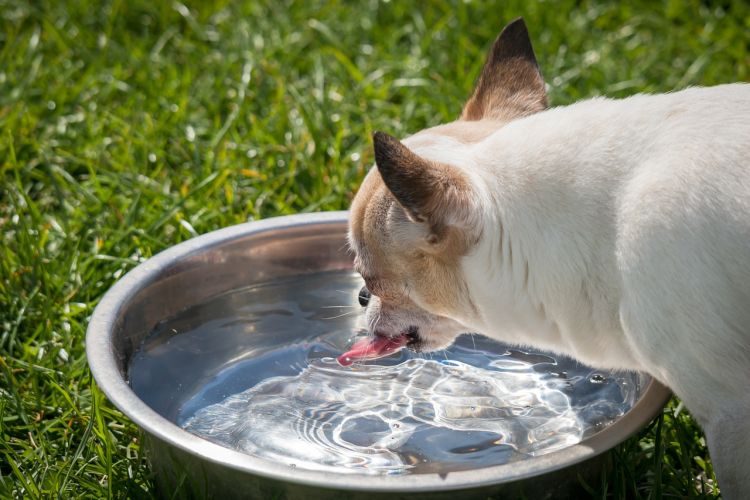
4 Ways Your Dogs Water Can Make Them Sick
How much do you think about your pets water bowl?
Do you know that the dogs drinking bowl is the 3rd most germ-laden place in the house after the toilet bowl and the kitchen sink?
We all know clean, fresh water is vital for good health. With this in mind, you probably top up the bowl every time it goes down.
But as it happens, this isnt sufficient to ensure good health. Merely topping up the water level does nothing to control harmful bacteria or even toxins that can be lurking in the water. Not only are these bugs unpleasant, but also they can cause illness in people, especially those with weak immune systems.
So what bugs could be lurking in less-than-fresh water for your dog? Quite a few, as it happens:
1. Giardia
This single-celled parasite may be better known to you as travelers diarrhea. (Yes, it can infect people too, not just pets.)
Giardia is shed in feces inside a hardy oocyst. The latter is tough and can survive for long periods of time in warm, humid conditions and thrives in water.
When a dog drinks infected water, the parasite passes into their gut. Some dogs show no symptoms, but others can develop sickness and weight loss in addition to diarrhea.
A diagnosis is made by examining a fecal sample under the microscope. Most cases respond well to a 3- to 10-day course of fenbendazole (Panacur) or metronidazole.
2. Cryptosporidium
Cryptosporidium is similar to giardia but a whole lot tougher.
Its so tough that it can survive chlorine treatment. Similar to giardia, oocysts are passed in feces that, if they get into water, are a source of infection for animals and birds.
- The treatment is fenbendazole or metronidazole to kill the parasite in the gut.
- Also, bathe and shampoo the dog on the last day of treatment to wash away any oocysts clinging to the coat. Not doing so risks reinfection should the dog lick their fur.

3. Leptospirosis
Leptospirosis is a particularly nasty infection with the potential to kill. Its also a devious infection because signs can range from mild stomach upsets that last for weeks to months to acute liver and kidney failure that are fatal in hours.
Other symptoms include:
- Fever
- Muscle weakness
- Blood in the urine
- Loss of appetite
- Vomiting
- Diarrhea
- Collapse due to organ failure
Leptospirosis can be spread by rat urine and especially loves water sources such as standing water, puddles and bird baths. The unpredictable nature of leptospirosis means prevention is the best policy.
Happily, there are vaccines available. If you live in a risk area for lepto, then your vet will advise giving the vaccine.
A word of caution, though: The vaccine must be given yearly, as immunity is often gone completely 12 months after the previous dose.
Oh, and pets can pass lepto to people. If your dog shows similar symptoms to those above and you feel unwell, see your physician as a matter of urgency.
4. Blue-Green Algae
You may be aware that dogs shouldnt swim in water with an obvious algal bloom, but do you know why?
Cyanobacteria, also known as blue-green algae, are a toxin-producing form of bacteria. This toxin can affect any mammal (including people), causing nerve and liver damage. Signs of toxicity include:
- Weakness
- Muscle tremors
- Drooling
- Vomiting
- Diarrhea
- Breathing difficulties
- Collapse and death
There is no antidote to blue-green algae poising. Treatment includes rinsing out the stomach to remove contamination and supportive care with intravenous fluids.
So dont let your dog swim in dirty water or drink from containers of old water give them the fresh stuff.

Biofilms on Your Pets Water Bowl Are Bad
Does your dog or cat have a stainless steel drinking bowl?
Next time you rinse the bowl under the tap, look for that misty, smoky layer covering the metal.
If you cant see it, try wiping your finger across the wet metal surface. If your fingertip leaves a clean streak in its path, then youre looking at a biofilm.
The definition of a biofilm is: A thin but robust layer of mucilage adhering to a solid surface and containing a community of bacteria and other microorganisms. OK, a biofilm is like a thin layer of stickiness rich in bacteria that coats a surface.
You will have experienced a biofilm for yourself the last time you skipped brushing your teeth. You know that unpleasant stickiness that coated your teeth? Well, this is a biofilm made up of mucin, which is a mucous-like glue and bacteria combination.
When water comes into contact with a biofilm, it then becomes a weak bacterial soup. When the pet drinks that water, its tantamount to challenging their immune system to a duel. If the dog is very young, elderly or on immune-suppressive drugs, then theres a risk of them becoming ill.
Plastic Bowls Are Pretty Terrible
Plastic bowls have more than their fair share of problems when it comes to drinking water.
The plastic surface is easily scratched, which provides inviting nooks and crannies for bugs to hide in.
But more than this, plastic bowls are made of chemicals. One of these in particular, p-benzyl hydroquinone, inhibits the production of melanin (dark pigment).
Its melanin that gives a black, leathery nose its rich, deep color. When a nose has regular contact with p-benzyl hydroquinone, such as when the dog drinks, it can cause depigmentation. This can lead to a black nose turning mottled or patchy-looking.
And if this substance can do this to the outside of the body, whats it doing to the inside?
We know that BPA (a chemical that hardens plastic) can interfere with the production of natural hormones in the body. In people, BPAs are linked to diabetes, impaired brain function and cancer. When you think how small dogs and cats are compared to people, the dose of BPA they get must be relatively higher.
In short: Ditch the plastic drinking bowls!

Micro-Cracks Lurk in Ceramic Bowls
Surely, a good, heavy-duty ceramic bowl is better, right? Yes and no.
Ceramic bowls arent regulated in terms of what goes into making them. There is concern that some originating from China contain lead. Lead is a toxic substance that causes destruction of the red blood cells and nerve damage and is generally a substance best avoided.
In addition, the glaze on a ceramic bowl is subject to micro fractures. This is called crazing within the glaze and can be seen on a microscopic level.
Scientists investigating biofilms found them to be just as bad on ceramic bowls as plastic. They suspect this ultra-fine crazing somehow provides grip for the microfilm to stick to.
Stainless Steel Is Best
The hands-down winner when it comes to drinking bowls is stainless steel. However, this is only if they are washed regularly, preferably on a daily basis.
Even a stainless steel bowl builds up a biofilm if its not washed properly. Get into the habit of washing your dogs water bowl daily, preferably with hot, soapy water or by putting it through the dishwasher.
Dont be tempted to merely top up the water level this is feeding the bacterial soup. For optimal health for your pets and family chose stainless steel and empty it out daily, wash it with hot, soapy water, rinse and fill with fresh water.
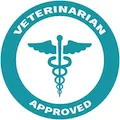
This pet health content was written by a veterinarian, Dr. Pippa Elliott, BVMS, MRCVS. It was last reviewed Oct. 13, 2018.

